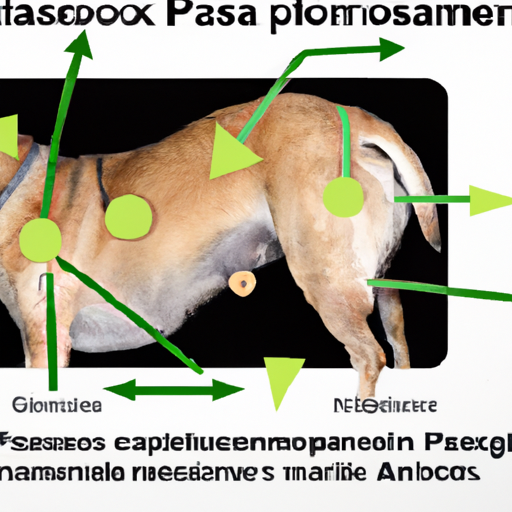As pet parents, we often view our four-legged friends as family members. Their health and well-being are of utmost importance to us. One health condition that may affect your male dog is paraphimosis, a condition that involves the inability of a dog to retract its penis back into the sheath. This article will delve into the symptoms, causes, prevention measures, and treatment options for paraphimosis in dogs.
Table of Contents:
- Understanding Paraphimosis
- Symptoms of Paraphimosis in Dogs
- Causes of Paraphimosis in Dogs
- Diagnosing Paraphimosis in Dogs
- Treating Paraphimosis in Dogs
- Preventing Paraphimosis in Dogs
- Frequently Asked Questions
Key Takeaways:
- Paraphimosis is a serious condition that needs immediate veterinary attention.
- The condition is characterized by the inability of a dog to retract its penis back into the sheath.
- Treatment options are largely dependent on the severity of the condition.
- Prevention is key and involves regular check-ups and maintaining overall hygiene of your pet.
Understanding Paraphimosis
Paraphimosis is a genital condition that affects male dogs. As a pet parent, it’s essential to be well-informed about this condition to take quick action when needed. It literally involves the inability of a dog to retract its penis back into the preputial sheath, a tube of skin that covers and protects the non-erect penis.
Familiarize yourself with this condition through this descriptive guide on Veterinary Partner.
Symptoms of Paraphimosis in Dogs
Identifying paraphimosis in dogs isn’t difficult if you know what to look for. The most evident symptom is a visible and prolonged exposure of the penis. Other accompanying symptoms may include:
- Excessive licking of the genital area
- Obvious discomfort or pain
- Swelling or discoloration around the penis
- Difficulty urinating
Causes of Paraphimosis in Dogs
Paraphimosis can be caused by several factors. It might be due to physical trauma, genital infections, urinary tract disorders, or prolonged erections due to various health conditions. Sometimes, it might also occur in overexcited dogs that have prolonged erections.
Diagnosing Paraphimosis in Dogs
If you notice any of the symptoms mentioned above, it’s crucial to seek veterinary assistance immediately. Your vet will conduct a physical examination and may request further tests to rule out underlying health conditions.
Treating Paraphimosis in Dogs
Treatment of paraphimosis largely depends on the severity of the condition. It might involve cleaning and lubricating the exposed penis and manually retracting it back into the sheath. Severe cases might require surgical intervention to correct the issue.
Consider reading this study on the treatment of paraphimosis in dogs for a more in-depth understanding.
Preventing Paraphimosis in Dogs
Prevention of paraphimosis involves regular check-ups and maintaining the overall hygiene of your pet. If you notice your dog frequently licking its genital area, it’s advisable to consult a vet.
Familiarize yourself with canine health and wellness through these articles on OneTopDog, understanding your dog’s behavior, and the importance of regular vet check-ups.
Frequently Asked Questions
1. Can paraphimosis in dogs be prevented?
Yes, regular check-ups and maintaining overall hygiene can help prevent paraphimosis.
2. Is paraphimosis a life-threatening condition?
If left untreated, paraphimosis can lead to severe complications that can be life-threatening. It’s crucial to seek veterinary help immediately if your dog exhibits any symptoms.
3. Can paraphimosis be treated at home?
No, paraphimosis is a serious condition that requires professional veterinary care. Do not attempt to treat this condition at home.
In conclusion, being a vigilant caregiver to your pet can help detect and treat conditions like paraphimosis in a timely manner. Always remember to consult with a vet if you notice any abnormal behavior or physical changes in your dog. Your furry friend depends on you for their well-being.



